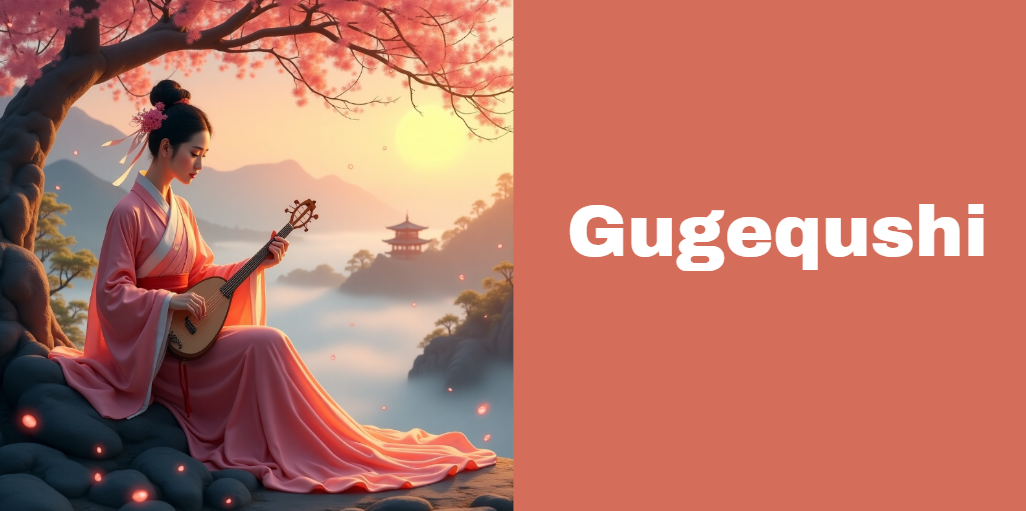Gugequshi: The Timeless Art of Chinese Song-Based Storytelling and Music Heritage
Gugequshi is an extraordinary cultural treasure from China, blending music, poetry, and storytelling. This traditional art form dates back centuries and involves performing ancient narratives through melodic expression. The term “gugequshi” translates to “ancient song and story,” which accurately reflects its purpose—telling meaningful stories through lyrical songs.
Though lesser-known globally, gugequshi holds immense value in Chinese heritage. It’s a medium that conveys emotions, educates moral values, preserves language, and reflects historical events. In recent years, gugequshi has experienced a revival among cultural enthusiasts, performers, and scholars who recognize its beauty and cultural importance.
Historical Origins
The roots of gugequshi stretch deep into Chinese antiquity. This tradition has evolved through different historical stages and dynasties.
In the earliest form, music and poetry were closely linked in the Shijing (Book of Songs), which included ritual hymns and folk tunes from the Zhou dynasty. Later, during the Han dynasty, the Yuefu (Music Bureau) systematized musical performances for both court and public settings, laying the groundwork for musical storytelling.
By the Tang and Song dynasties, gugequshi matured. It absorbed Buddhist, Confucian, and folk influences. In Tibet-influenced western China, especially around the 17th century, variations of gugequshi flourished with unique melodic scales and rhythmic forms.
Timeline Overview:
| Era | Contribution to Gugequshi |
|---|---|
| Zhou Dynasty | Folk songs and ritual chants |
| Han Dynasty | Establishment of formal music bureaus |
| Tang Dynasty | Integration with poetic expression |
| Song Dynasty | Refinement of narrative structures |
| Qing Period | Regional spread and popularization |
Core Characteristics
What sets gugequshi apart from other musical forms is its blend of melody and narrative. Each performance is like a small opera—combining singing, speaking, and sometimes dance to relay a tale.
The stories told often explore universal themes such as love, loyalty, justice, patriotism, and the beauty of nature. Performers usually use a semi-improvised approach, adjusting pitch, tone, and rhythm based on audience response and personal style.
Typical characteristics include:
- A slow, expressive tempo to allow emotional delivery.
- Flexible structure allowing both short poems and long epics.
- Use of tonal inflection and traditional scales like pentatonic modes.
- Repetition of musical phrases for emphasis and memorability.
Traditional Instruments
Gugequshi is never complete without its distinctive instrumentation. These instruments not only support the vocal line but also add emotional depth to the story being told.
Main Categories of Instruments:
| Instrument Type | Examples | Function in Gugequshi |
|---|---|---|
| Stringed | Guqin, Pipa, Yangqin, Erhu | Provides melody and emotional tone |
| Wind | Dizi, Sheng | Adds harmony and dramatic accents |
| Percussion | Small drums, Gongs, Wooden Fish | Sets rhythm, marks transitions |
For example, the guqin—a 7-string zither—creates an introspective sound ideal for sorrowful or reflective tales. The erhu, often called the Chinese violin, adds emotional richness, especially in romantic or tragic stories.
Repertoire & Musical Texts
Over the centuries, countless songs and musical texts have been written and orally transmitted in the gugequshi tradition. Some are performed from ancient scripts, while others are passed down through oral memorization.
Notable examples include “Farewell My Concubine,” “Moon over the Frontier,” and “The Story of Lanke Mountain.” Many of these pieces were originally performed in royal courts, temples, or open-air gatherings.
Gugequshi performers also rely on “Qin Pu”, which are collections of guqin scores written in ancient notational systems like “jianzi pu” (abbreviated character tablature). These documents preserve not just the melody but also instructions on mood and finger technique.
Performers & Performance Practice
Gugequshi can be performed solo or with a small ensemble. The lead performer typically sings and narrates, while instrumentalists accompany with rhythm and mood.
Famous gugequshi practitioners such as Wang Gang and Li Mei are known for their expressive voices and mastery of traditional phrasing. They often perform at cultural festivals, Confucian temples, or tea houses.
Costume, gesture, and facial expression also play vital roles. A performer may use subtle hand movements to represent wind or tears, or change pitch dramatically to show joy or sorrow. These elements bring the narrative to life and deepen audience engagement.
Themes and Messages
The beauty of gugequshi lies in its universal messages. These ancient songs are more than entertainment—they are tools of cultural education.
Common themes include:
- Loyalty and Patriotism: Stories of soldiers who defend their land, even at personal cost.
- Romantic Devotion: Tales of lovers separated by war or social barriers.
- Moral Dilemmas: Decisions between personal happiness and societal duty.
- Nature and Spirituality: Respect for the natural world and Buddhist or Taoist teachings.
These timeless themes still resonate today, showing that the emotions and struggles of ancient people aren’t so different from our own.
Notation & Musicology
One unique aspect of gugequshi is its ancient notational systems. Instead of modern staff notation, early performers used symbol-based formats like “wenzi pu” and “jianzi pu” for the guqin. These included shorthand characters that indicated finger placement, rhythm, and expression.
Modern scholars often work to decode these texts and transcribe them into readable formats for students and musicians.
Musically, gugequshi tends to rely on pentatonic scales, though regional variations may introduce additional notes or microtones for emotional effect.
Decline and Rediscovery
Like many traditional arts, gugequshi experienced a decline during political and cultural shifts—particularly during the 20th century and the Cultural Revolution, when many ancient practices were discouraged or lost.
However, local communities, cultural institutions, and academic researchers have recently taken steps to preserve and revive gugequshi. These include oral history projects, digitization of ancient texts, and public performances at cultural heritage festivals.
Modern Revival & Adaptation
Gugequshi is enjoying a modern revival, especially among younger audiences. Artists are blending its structure with modern genres like pop, rock, and electronic music—creating “gufeng” or “ancient-style” pop songs.
Online platforms such as YouTube, TikTok, and Bilibili are popularizing short-form gugequshi performances. These videos, often enhanced with costumes and cinematic visuals, introduce global audiences to this uniquely Chinese tradition.
Educational programs and international cultural festivals now also include gugequshi as a way to demonstrate China’s rich musical legacy.
Educational & Cultural Significance
Gugequshi is more than music; it’s a living record of Chinese history, philosophy, and aesthetics. Many schools, universities, and cultural academies now include gugequshi studies in their curriculum. This helps students connect with their roots while learning about performance arts, literature, and historical context.
It’s also used in community programs to foster intergenerational exchange—elders pass down songs and stories to younger people, preserving tradition and strengthening cultural identity.
How to Experience Gugequshi Today
There are many ways to enjoy gugequshi in the modern world. You can attend live performances at cultural festivals or temples. Many cities in China host annual storytelling or music heritage events.
For global audiences, the internet offers rich resources. Platforms like YouTube, Spotify, and even TikTok feature gugequshi performances. Cultural institutions also publish translated lyrics and musicological research online.
Where to Watch or Learn:
| Platform | Content Type |
|---|---|
| YouTube | Full performances, documentary clips |
| Bilibili | Youth-oriented adaptations |
| Spotify | Audio recordings and albums |
| Academia.edu | Research papers and translations |
| Coursera | Educational courses on Chinese music |
Conclusion
Gugequshi is a beautiful blend of history, art, and human emotion. It represents not just the music of the past but also the timeless power of storytelling. Through melodic phrases and poetic lyrics, gugequshi teaches values, preserves memories, and connects generations.
As it continues to evolve and gain appreciation worldwide, gugequshi remains a testament to the richness of Chinese culture—and an invitation for all to experience the deep beauty of musical storytelling.
Recommended Articles
Lesy ad Spiderweb – The Magical Connection Between Forests and Spider Webs
www Free Worlder.org – The Ultimate Guide to Sustainable Travel Through Skill Exchange
Ashley Ann Tahigan Storyboard Guide: A Complete Beginner-to-Expert Visual Storytelling Handbook
Comprehensive Guide to 805-354-1683: Identifying and Protecting Against Spam and Scam Calls





